Elevate your efficiency
The ultimate resource management maturity model for government contractors
Enhancing efficiency and competitiveness through strategic allocation
In government contracting (GovCon), effective resource management is critical to success and sustainable growth. That's why it's helpful to use a resource management maturity model specifically designed for government contractors. This model outlines a pathway through which organizations can advance from ad hoc processes to a state of continuous improvement, thus enhancing their project delivery, compliance, and competitive stance.
Resource management for GovCons is exceedingly complex, given the stringent compliance requirements, the necessity for precision in cost tracking, and the dynamism of government priorities. Using our five-level resource management maturity model, specifically designed for GovCons, can help you manage your resource more effectively. Each maturity level builds upon the previous one, incorporating progressive refinements in the areas of training, policies, tools, and culture.
In the annual GAUGE Report, a benchmarking survey targeting the GovCon industry, top GovCons discussed how they would evaluate their own resource management maturity. The survey covered companies of all sizes, and you can see in the above graphic how some of the leaders in the GovCon industry evaluate their own resource management maturity.
Implementing superior resource management not only streamlines operations but also significantly prepares your organization for an Earned Value Management System (EVMS) audit from the Defense Contract Management Agency (DCMA). A well-established resource management maturity model ensures that your project management practices are in line with EVMS criteria, facilitating compliance with federal guidelines.
How mature is the industry in resource management?
Measuring success in resource management for government contractors
Success in resource management for government contractors can be quantitatively and qualitatively measured through several key performance indicators (KPIs). Identifying and tracking these KPIs help organizations to assess their efficiency, effectiveness, and alignment with strategic objectives. There are many ways to measure, but here are the top three KPIs essential for government contractors:
-
Project profit margin
The project profit margin is a critical KPI that measures the profitability of government contracts. It is calculated by deducting the total project costs from the total income generated by the project, divided by the total income. This indicator reflects the financial health of projects, showcasing efficiency in using resources to deliver services or products under budget constraints.
An organization that has more mature resource management can maximize profit by making sure the most cost-effective resources are applied to every task.
-
Utilization rate
Utilization rate, particularly for labor-intensive contracts, indicates the percentage of billable hours out of the total available hours. A higher utilization rate suggests that the organization effectively leverages its human resources towards revenue-generating activities, directly impacting the company's bottom line and indicating efficient resource management.
Utilization is simple when a resource is fully dedicated to a single contract or project, but many contractors must split time between multiple projects. This is when having maturity in resource management helps you maximize utilization.
-
Compliance and audit readiness
For GovCons, adherence to regulations and being audit-ready at all times are indispensable. This KPI measures the organization's capability to meet government regulations and standards, assessed through successful audits. It involves maintaining accurate and timely records, cost tracking, and ensuring all processes meet the defined compliance requirements.
A mature organization has all the documentation needed for an audit and knows that employees are following the documented process using the tools that were set up for them - thereby handling 90% of any compliance audits without any extra effort.
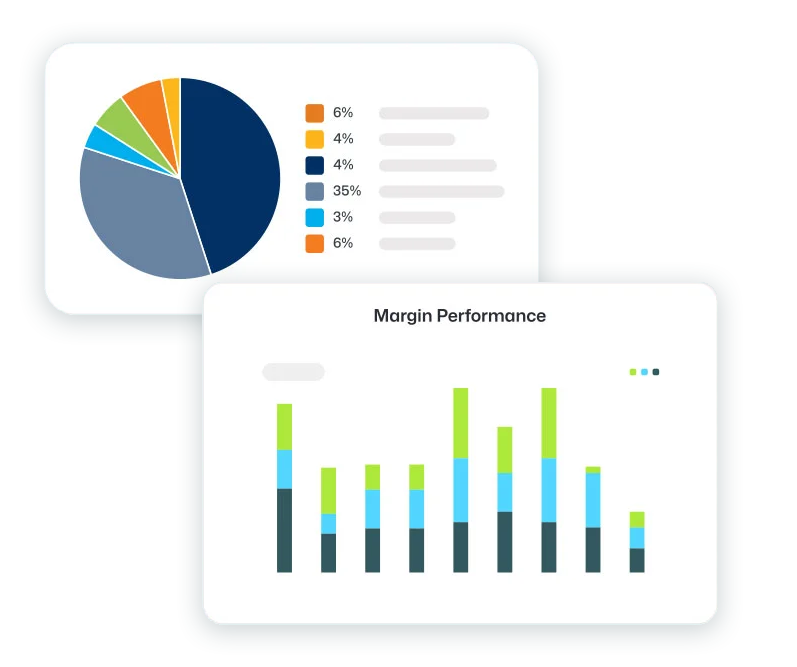
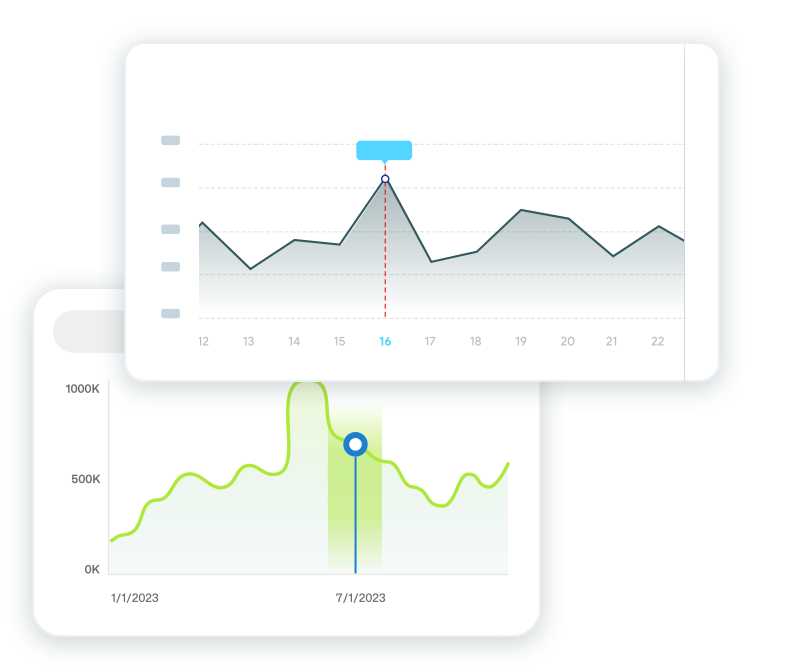
Key aspects of resource management
-
Training
Successful resource management relies on skilled individuals supported by ongoing training for how to use the various systems and processes set forth by the business. Advancing through the maturity model necessitates an investment in building expertise in GovCon-specific requirements and best practices. -
Policies
Developing and implementing standardized policies and procedures is crucial for consistency and efficiency. Organizations should establish clear guidelines for forecasting, compliance, and resource allocation processes. Policies should be stored in one place, reviewed regularly, and made available to all employees. -
Systems
Leveraging modern, integrated tools and systems, such as Unanet GovCon ERP, enables organizations to streamline operations and gain valuable insights. These technology solutions support effective management across various business functions like project management and financial reporting.
-
Culture
Fostering a culture that values strategic resource management and aligns with the organization's vision is fundamental to achieving higher maturity levels. Culture starts with leaders who follow the processes visibly and are involved in evangelizing any changes or new tools.
The model stages
The journey through the resource management maturity model can feel a bit like growing up. Just as we move from the awkwardness of our teenage years into the refined (or at least, more self-aware) stages of adulthood, GovCons evolve through stages of maturity in managing their resources. Like any coming-of-age story, there will be growing pains, but the rewards at each stage of maturity make the journey worthwhile.
-
Level 1
Ad hoc or initial stage
At this stage, organizations handle resource management on an ad hoc basis, with minimal formal processes or planning. Resource allocation is often reactive, and decisions are made in silos. This level reflects a nascent understanding of the strategic value of integrated resource management.
How to Level up
- Create and document policies and procedures
- Make sure there is a repository for easy access
- Feedback loop to make sure policies are being followed
- Create a self-audit plan
- Concentrate on the basics – resource names, availability, skills, and utilization
- Define key performance indicators (KPIs) for your project
- Provide role-based training on policies and procedures
- Evaluate tools and future needs
-
Level 2
Basic or project by project
Organizations begin to apply basic resource management principles to individual projects. While there is some level of planning, it lacks consistency across the organization. Tools employed are often rudimentary, and policies and procedures are not yet standardized.
How to Level up
- Measure adherence of enterprise policies and procedures
- Information is shared across projects with modern tools
- Enterprise-wide labor categories and skills inventory/classifications
- Defined skill levels used for resource selection
- People, processes and tools provide an enterprise-wide resource forecast
- Resources are budgeted and forecasted at the task level
- Supply and future supply of resources is visible
- Resource demand is visible to all project stakeholders
- Projects are being planned with resource constraints in mind
- Decide on a common set of enterprise wide and project level KPIs
- Automation of the process with the right tool
-
Level 3
Organizational level standards
At this maturity level, standardized policies and procedures are developed and implemented across projects. Organizations adopt formal tools and systems for resource management but may still struggle to optimize their use. The culture starts to shift towards recognizing the value of comprehensive resource planning.
How to Level up
- Use data (historical and current) to drive hiring and placement decisions
- Common tool for enterprise level resource and skills budgeting and forecasting that all stakeholders have access to
- Formal resource requesting process
- Standard resource management metrics/KPIs with visibility of performance goals/thresholds
- Self-reporting on utilization
- Align resource forecasts and plans to corporate goals and objectives
- Realtime resourcing information via reports and dashboards
- Utilize KPIs to directly influence achievement of business goals and to make great business decisions
- Pipeline is also resourced for full look at the total needs of the business
- Tools now support the process with minimal manual touches
- Continue role-based training for all stakeholders
- Tools training is a recurring activity
-
Level 4
Data driven or quantitative
Organizations achieve a data-driven approach to resource management when decisions are informed by accurate, real-time data, and advanced analytical tools are deployed to anticipate and mitigate risks. This stage is marked by a robust integration of resource management into overall business operations.
How to Level up
- Measure investments in your people with training and a career path
- Establish a continuous feedback loop from all stakeholders
- Incentivize employees to be creative and listen to the suggestions
- Continue to evolve your processes looking for areas to improve
- Collect and utilize lessons learned and drive them into your process
- You will feel the organization firing on all cylinders
-
Level 5
Continuous Improvement
The pinnacle of the model, where organizations have established a culture of continuous improvement. Processes and systems are regularly reviewed and refined based on performance data. The organization exhibits agility in reallocating resources promptly and effectively to meet strategic goals and compliance requirements.
In addition, at this phase every employee should feel empowered to give feedback and have an impact on resource management at the organization. This not only accelerates adoption, but it also produces better results for the business overall.
How mature is your firm's resource management practice?
Use this assessment tool to find out your organization's overall Resource Management Maturity level. You can use it to reassess as often as necessary. Be frank in your answers, then we will identify the areas you need to shore up in order to move onto the next level.
Strategies for advancing through the maturity model stages
To effectively transition through the levels of the Resource Management Maturity Model, government contractors must adopt a holistic approach, focusing on strategic planning, technology adoption, and cultural transformation. Here are the best strategies for facilitating this advancement:
Strategic planning and goal setting
-
Define clear objectives
Begin by establishing clear, measurable objectives for what you want to achieve at each maturity level. This involves setting specific goals for process improvement, compliance, financial performance, and resource optimization. -
Assess current maturity level
Conduct a thorough assessment of your current maturity stage. This evaluation should include identifying strengths, weaknesses, and areas requiring improvement to form a roadmap for progression. -
Develop a roadmap
Create a strategic roadmap outlining the steps to move from one maturity level to the next. This plan should include timelines, key milestones, resource requirements, and responsibility assignments.
Technology adoption and integration
-
Invest in the right tools
Leverage advanced technologies and ERP systems that facilitate integrated resource management. Tools like Unanet GovCon ERP offer functionalities tailored to the nuances of GovCon resource management, enhancing visibility and control over resources. -
Ensure system integration
Opt for solutions that offer seamless integration with existing systems to avoid silos. A fully integrated system ensures that data flows across all aspects of the business, enabling more informed decision-making. -
Adopt data analytics
Utilize data analytics and business intelligence tools to derive actionable insights. These technologies support better forecasting, risk management, and strategic planning by providing a data-driven understanding of resource allocation and utilization.
Cultural transformation and continuous learning
-
Promote a culture of continuous improvement
Cultivate an organizational culture that values agility, flexibility, and continuous learning. This involves encouraging innovation, adapting to change, and fostering an environment where feedback is used constructively to drive improvement. -
Invest in training and development
Continuous training and development programs are essential. These programs should not only focus on skill enhancement but also on fostering an understanding of the strategic importance of resource management and compliance. -
Encourage collaboration and communication
Foster a collaborative work environment where information sharing and cross-functional communication are the norms. This helps in breaking down silos, promoting a unified approach to resource management across the organization.
Compliance and best practices
-
Stay informed on regulations
Stay up to date on the latest government regulations and compliance requirements. Understanding these guidelines is crucial for maintaining audit readiness and ensuring that resource management practices meet government standards. -
Adopt industry best practices
Look to industry best practices for guidance on improving processes. Engaging with professional networks, attending conferences, and participating in GovCon forums can provide valuable insights and innovative ideas for advancing through the maturity levels.
Key tips for advancing resource management maturity
-
Define clear objectives and develop a roadmap
Establish measurable goals for each maturity level and create a strategic roadmap that outlines steps, timelines, milestones, resource requirements, and responsibility assignments. -
Invest in advanced technologies and ERP systems
Leverage integrated tools and systems like Unanet GovCon ERP to enhance visibility and control over resources, ensuring seamless data flow and informed decision-making. -
Foster a culture of continuous improvement
Cultivate an agile and flexible organizational culture that values continuous learning, innovation, and constructive feedback to drive improvements in resource management practices. -
Promote collaboration and communication
Encourage a collaborative work environment with robust information sharing and cross-functional communication to unify the approach to resource management across the organization. -
Stay informed on compliance and best practices
Keep updated on the latest government regulations and industry best practices to maintain audit readiness and ensure that resource management practices align with government standards.
Leveraging Unanet GovCon ERP for enhanced resource management maturity
Unanet GovCon ERP stands out as a pivotal tool for government contractors aiming to elevate their Resource Management Maturity Model to new heights. By providing a comprehensive suite of features specifically designed for the unique challenges of GovCon resource management, Unanet facilitates a seamless transition through the maturity levels.

How Unanet GovCon ERP advances resource management maturity

Centralized resource planning and allocation
Unanet's centralized data connects all organization, project, and resource level work data into one synchronized database and directly supports the transition from basic or project-by-project management to organizational level standards, emphasizing strategic resource allocation.
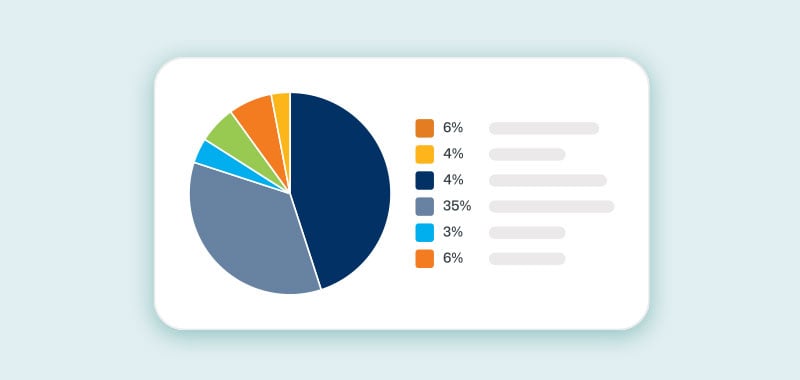
Data-driven decision making with real-time data analytics
Unanet's robust analytics and reporting capabilities support the data-driven or quantitative stage by providing the insights needed to anticipate resource demands and align them with business goals effectively. At the continuous improvement stage of maturity, real-time, interactive analytics are essential to allowing all teams to operate at maximum efficiency.
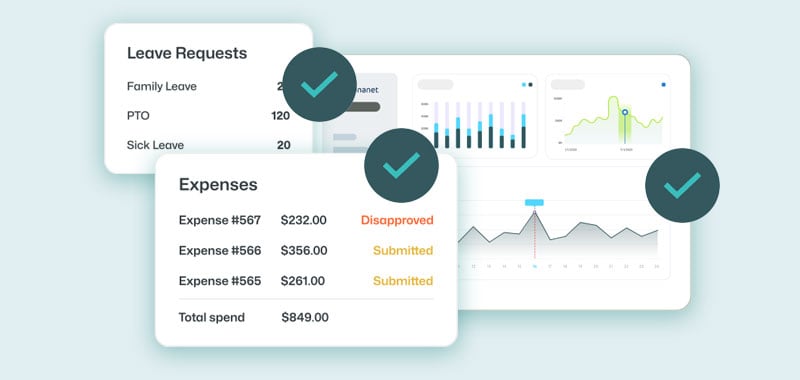
Continuous compliance through agile process improvement
Unanet supports a culture of continuous improvement through its flexible configuration and regular updates, designed to adapt swiftly to evolving business needs and industry standards. This functionality is crucial in maintaining agility and ensuring compliance with government regulations, key components of the continuous improvement stage.
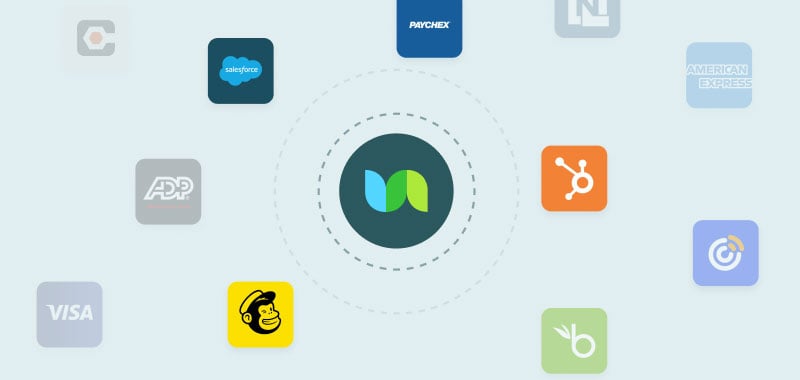
Seamless integration and scalability
The ability of Unanet GovCon ERP to integrate with other business systems, like our GovCon CRM, ensures that resource management is not a siloed function but instead a core aspect of the organizational workflow. This integration is essential for advancing through the maturity model, particularly from the organizational level standards to data-driven stages.
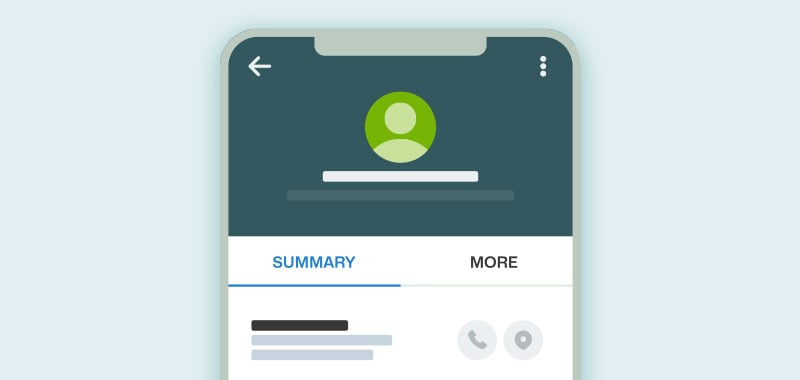
Facilitating cultural transformation and collaboration
By fostering a transparent and collaborative environment, Unanet encourages all stakeholders to engage in the resource management process. This not only enhances efficiency and accountability but also supports the cultural shift towards valuing strategic resource management at every level of the organization.
FAQs
for Government Contractors on improving resource management
To initiate improvements in resource management, GovCons should first conduct a comprehensive audit of their current practices and processes. This involves evaluating the effectiveness of existing tools, the skill set of the team, and the alignment of resource management practices with strategic objectives. Identifying gaps and areas for improvement provides a clear starting point for advancement.
Improvement in resource management can be effectively measured through key performance indicators (KPIs) such as project profit margins, utilization rates, and compliance and audit readiness. Additionally, conducting regular reviews and seeking feedback from stakeholders can offer insights into how resource management practices are impacting overall project success and organizational efficiency.
Technology plays a pivotal role in enhancing resource management by providing the tools and systems needed for efficient and accurate planning, tracking, and forecasting. Adopting integrated resource management software, like Unanet GovCon ERP enables contractors to gain real-time visibility into resource allocation, and streamline operations.
Improving resource utilization rates can be achieved by implementing strategic planning, utilizing forecasting tools to anticipate project demands, and regularly reviewing resource allocations to adjust for project shifts. Training staff to be versatile and adaptable also increases the ability to allocate resources effectively across projects.
Maintaining compliance and ensuring audit readiness involves establishing standardized policies and procedures, keeping thorough and accurate records, and adopting systems that provide transparency and traceability. Regularly updating training programs to keep staff informed on compliance requirements and conducting mock audits can also prepare organizations for actual compliance reviews.